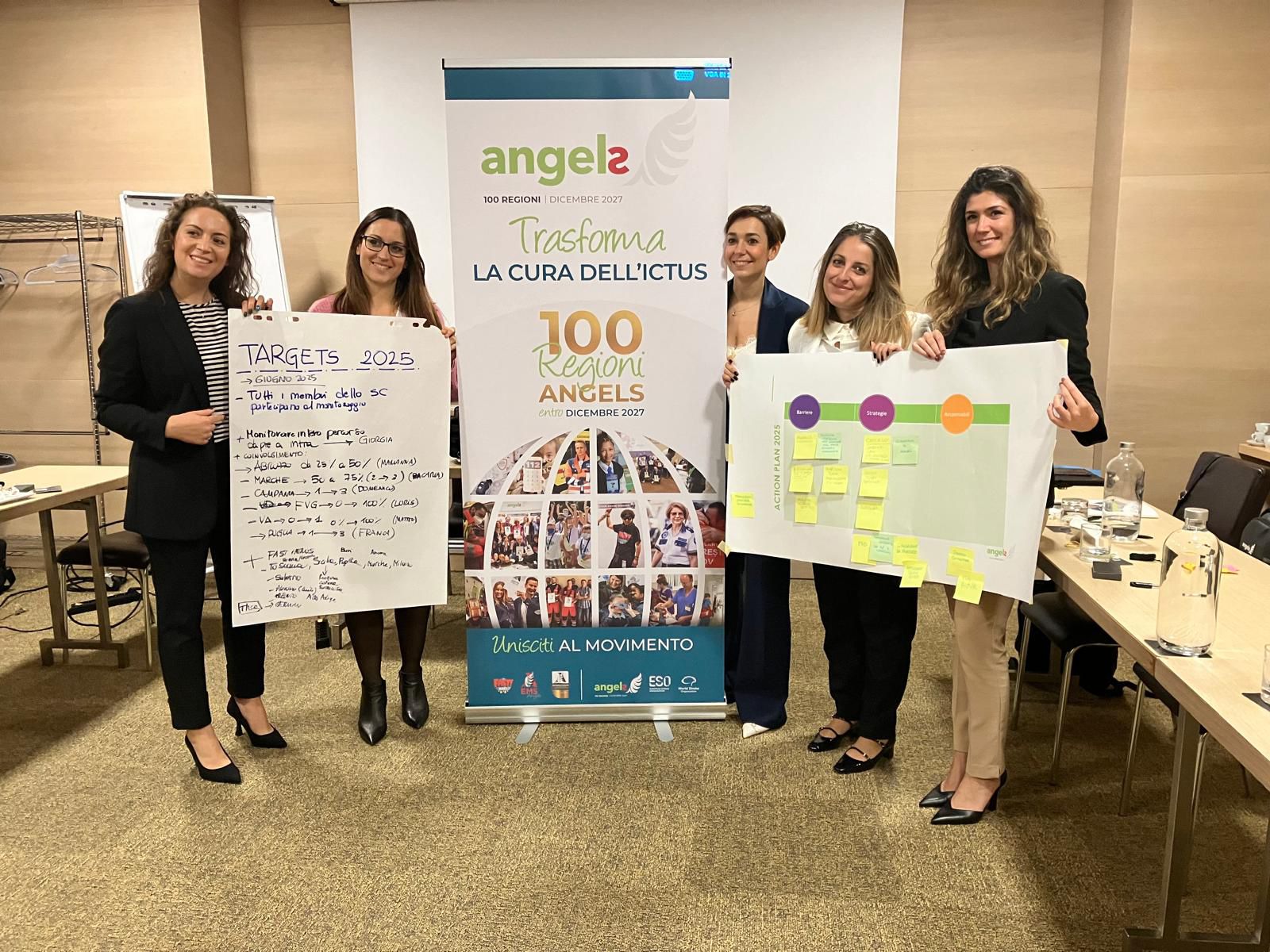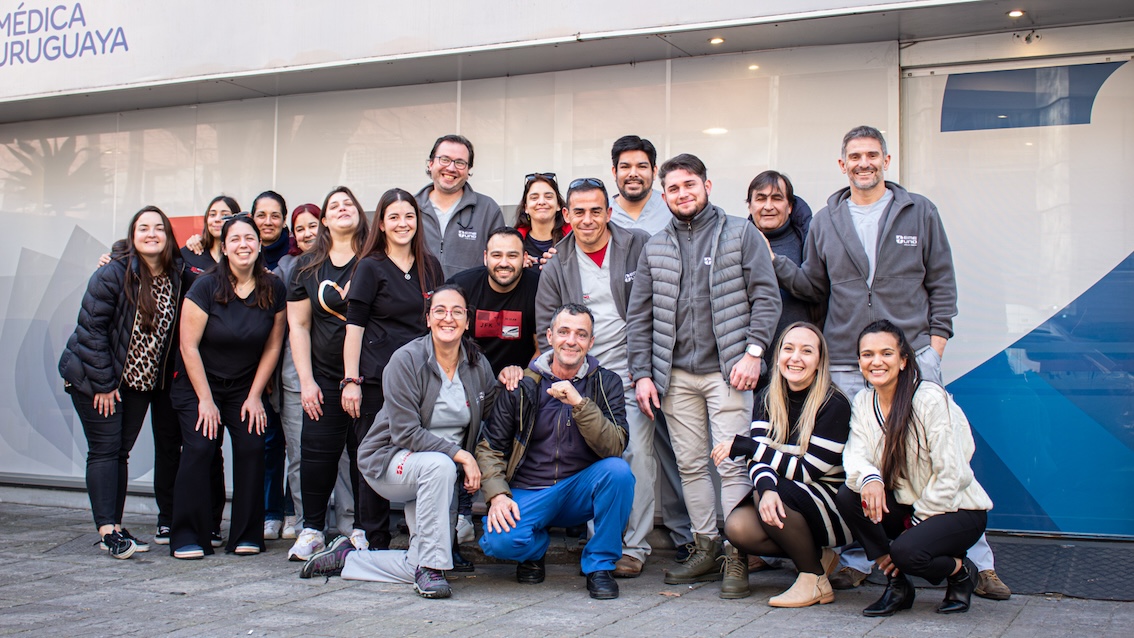Η βαθμολογία ενός ασθενής με αγγειακό εγκεφαλικό επεισόδιο επεισόδιο στην κλίμακα RACE της Καταλονίας είναι σε κίνηση ένα μοναδικό κύκλωμα εγκεφαλικού αγγειακό εγκεφαλικό επεισόδιο επινοήθηκε για να παρέχει πρόσβαση στη θεραπευτική αντιμετώπιση σε όλους όσους κάνουν αυτήν την περιοχή το σπίτι τους. Η εξάρτηση από ενδονοσοκομειακές μεταφορές παρουσιάζει προκλήσεις, για τις οποίες μια ενοποιημένη κοινότητα αγγειακό εγκεφαλικό επεισόδιο διατηρεί το κλειδί.
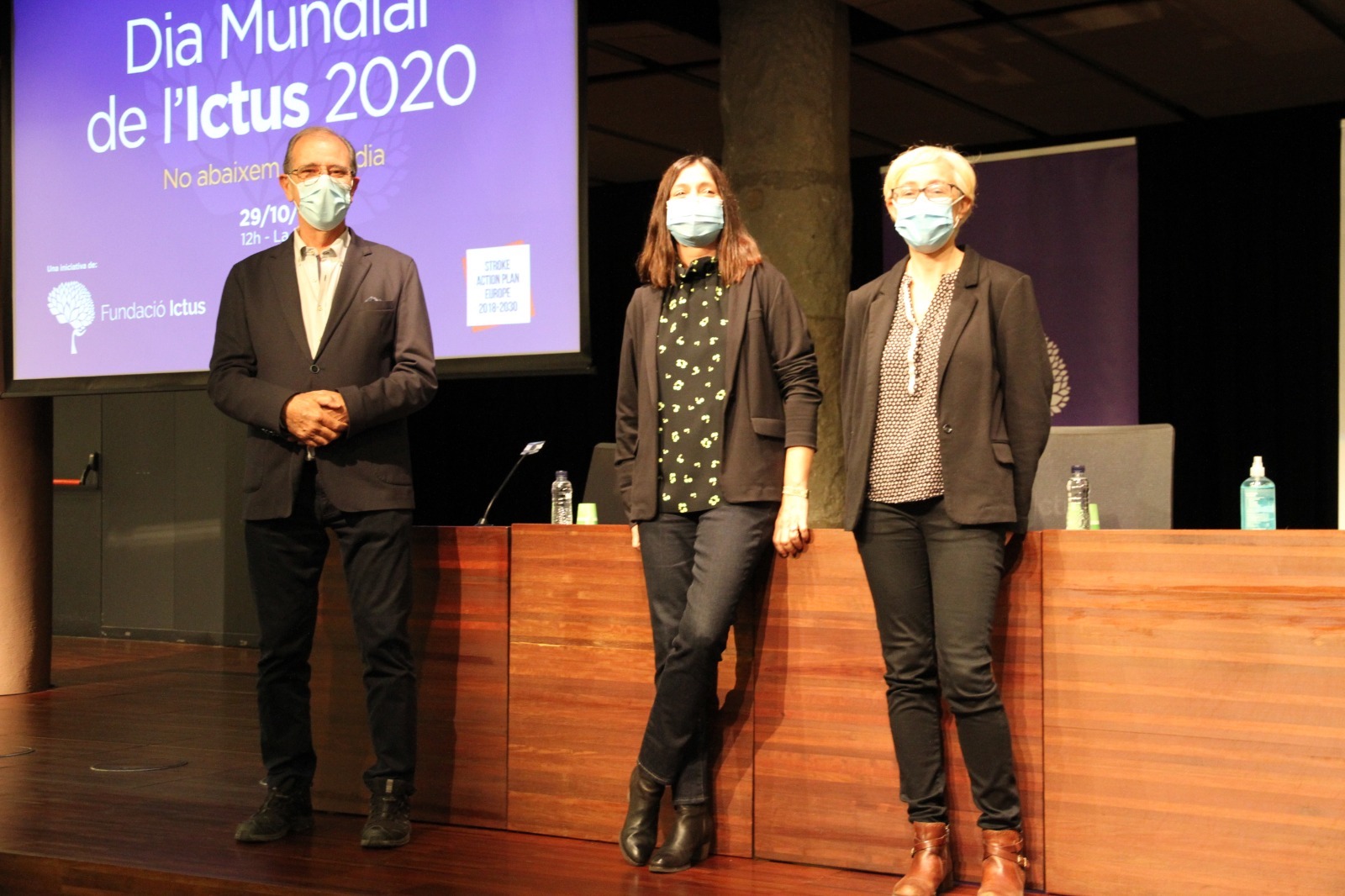
Ας υποθέσουμε ότι είναι λίγα λεπτά μετά τα μεσάνυχτα στην παραθαλάσσια πόλη Cadaqués στην Costa Brava. Είναι χειμώνας και ο άνεμος του Tramuntana χτυπά γύρω από την Plaça del Passeig όπου ο Marcel Duchamp συνήθιζε να παίζει σκάκι κάθε απόγευμα στο Bar Melitón. Ένα ασθενοφόρο περνάει, η σειρήνα του φούσκωσε και στη συνέχεια λιποθυμεί καθώς διασχίζει το δρόμο προς τα Σχουέρ, 37 λεπτά μακριά.
Στο εσωτερικό του ασθενοφόρο, οι τεχνικοί έχουν την απόφαση να λάβουν, η οποία θα εξαρτηθεί από την απόδοση του ασθενής σε ένα σύστημα βαθμολόγησης της βαρύτητας για ασθενείς με αγγειακό εγκεφαλικό επεισόδιο, γνωστό ως Κλίμακα RACE. Η κλίμακα RACE συντάχθηκε εδώ στην Καταλονία από μια ομάδα εργασίας με επικεφαλής την Δρ. Natalia Pérez de la Ossa και αποτελεί τη βάση για ένα ευφυές αλλά περίπλοκο σύστημα μεταφοράς για ασθενείς με αγγειακό εγκεφαλικό επεισόδιο σε όλη την περιοχή.
Εάν ο ασθενής από το Cadaqués έχει βαθμολογία κάτω του 5, θα λάβει επείγουσα περίθαλψη στο πλησιέστερο κέντρο αγγειακό εγκεφαλικό επεισόδιο, το Νοσοκομείο Φιγουέρες, με καθοδήγηση από έναν ειδικό νευρολόγος που συνδέεται μέσω συστήματος τηλεϊατρικής, πριν μεταφερθεί στη Χιρόνα για να ξεκινήσει την ανάρρωση του σε ένα νοσοκομείο εξοπλισμένο με μονάδα αγγειακού εγκεφαλικού επεισοδίου.
Ωστόσο, όσο υψηλότερη είναι η βαθμολογία RACE, τόσο μεγαλύτερη είναι η πιθανότητα να έχει ο ασθενής απόφραξη μεγάλου αγγείου και η διαδρομή θεραπευτική αντιμετώπιση του να κορυφωθεί σε ένα ολοκληρωμένο κέντρο με δυνατότητα εκτέλεσης ενδαγγειακής θρομβεκτομής.
Μια σειρά από σημαντικές κλήσεις λαμβάνουν χώρα καθώς ξετυλίγεται η νύχτα.
Πρώτον, ο συντονιστής ιατρικές υπηρεσίες για επείγοντα περιστατικά καλεί τον παραπέμποντα νευρολόγος αγγειακό εγκεφαλικό επεισόδιο για την περιοχή, ώστε να προσδιορίσει τον καταλληλότερο προορισμό και να ενεργοποιήσει τους απαραίτητους πόρους. Καθώς δεν υπάρχει αντένδειξη για ενδοφλέβια θρομβόλυση, η απόφαση είναι να τον μεταφέρουμε στο Νοσοκομείο Σχουέρες, το οποίο με τη σειρά του λαμβάνει μια κλήση για προ-ειδοποίηση.
Μόλις επιτευχθεί αυτό, μια βιντεοκλήση συνδέει την ομάδα αγγειακό εγκεφαλικό επεισόδιο με τον νευρολόγος του ίδιου αγγειακό εγκεφαλικό επεισόδιο, ο οποίος θα καθορίσει εάν ο ασθενής είναι υποψήφιος για επανασηραγγοποίηση, με βάση μια εξέταση που διεξάγεται εξ αποστάσεως και μελετώντας την αξονική τομογραφία που θα μεταφορτωθεί σε μια διαδικτυακή πλατφόρμα σε λιγότερο από δύο λεπτά.
Εάν επιβεβαιωθεί ή πιθανολογηθεί έντονα απόφραξη μεγάλων αγγείων, τότε μετά από ενδοφλέβια θρομβόλυση ο ασθενής μας από το Cadaqués θα αναχωρήσει στο επόμενο σκέλος του ταξιδιού του.
Το δίκτυο που συνδέει τους επαγγελματίες σε όλη την καταλανική επικράτεια ορίζεται με ακρίβεια. Επειδή η ενδαγγειακή θεραπευτική αντιμετώπιση δεν καλύπτεται ακόμα από το νοσοκομείο Josep Trueta της Χιρόνα τη νύχτα, είναι προορισμός της Βαρκελώνης, καθώς ένα δεύτερο ασθενοφόρο μεταφέρει τον ασθενής μας στο καθορισμένο ολοκληρωμένο κέντρο που εξυπηρετεί ασθενείς με αγγειακό εγκεφαλικό επεισόδιο επεισόδιο από την επαρχία της Χιρόνας όταν δεν είναι διαθέσιμη η θρομβεκτομή στο νοσοκομείο της Χιρόνα.
Χρειάζονται περίπου μία ώρα και 33 λεπτά για να επικοινωνήσουμε με το Γερμανικό Νοσοκομείο Trias, όπου θα γνωρίσουμε επίσης την Δρ. Natalia Pérez de la Ossa, τη δημιουργό της Κλίμακας RACE και τους τελευταίους 18 μήνες τη διευθύντρια του σχεδίου αγγειακό εγκεφαλικό επεισόδιο της Καταλονίας.
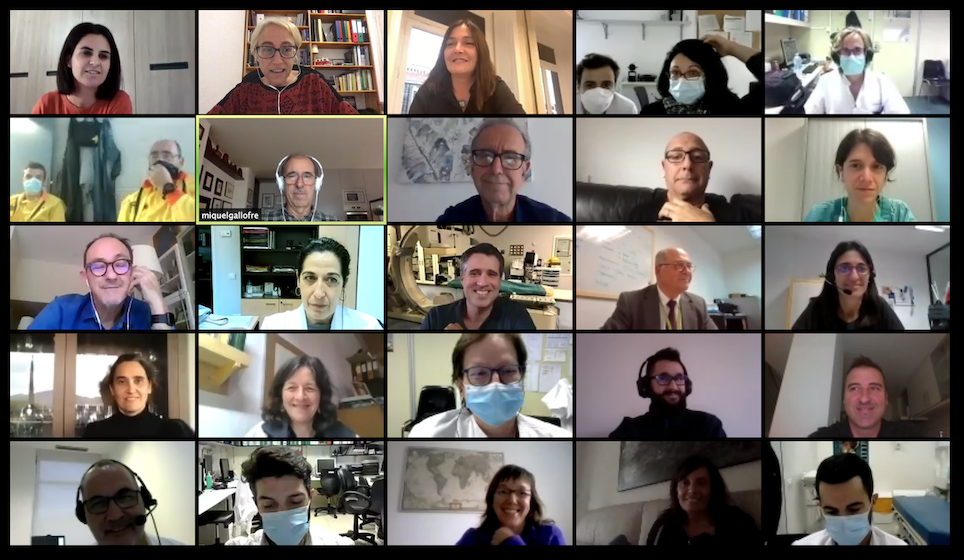
Ο κεντρικός συντονισμός της θεραπευτική αντιμετώπιση του αγγειακό εγκεφαλικό επεισόδιο στην Καταλονία είναι η κληρονομιά μιας τοπικής υγειονομικής αρχής, η οποία πριν από περίπου 17 χρόνια διαπίστωσε ότι χρειάζονταν σχέδια διαχείρισης για συνθήκες που επικρατούσαν στην περιοχή, εξηγεί ο Δρ. Pérez de la Ossa κατά τη διάρκεια ενός σπάνιου διαλείμματος από την παρακολούθηση σε καταστάσεις έκτακτης ανάγκης. Το σχέδιο αγγειακό εγκεφαλικό επεισόδιο από το υγειονομικό τμήμα της Καταλανίας και στελεχώνεται από έναν διευθυντή, νοσηλευτικό προσωπικό και διαχειριστή δεδομένων που συνεργάζονται με μια συμβουλευτική επιτροπή, καθώς και ομάδες εργασίας που αποτελούνται από ειδικούς από όλη την περιοχή.
Ο πρώτος διευθυντής του περιφερειακού σχεδίου για το αγγειακό εγκεφαλικό επεισόδιο επεισόδιο ήταν ο Miquel Gallofré, που πέτυχε μετά από οκτώ χρόνια η Sònia Abilleira. Εάν τα ονόματά τους φαίνονται οικεία, αυτό συμβαίνει επειδή θα τα βρίσκετε τακτικά και συχνά μαζί, αναφέρονται ως συγγραφείς μελετών θεραπευτική αντιμετώπιση αγγειακό εγκεφαλικό επεισόδιο που δημοσιεύονται σε κορυφαία περιοδικά. Δεν υπάρχει αμφιβολία ότι στέκονται ο ένας στον ώμο των άλλων ή ότι αυτό το είδος ομαδικής εργασίας είναι αυτό που λιπαίνει τους τροχούς της οργάνωσης του αγγειακό εγκεφαλικό επεισόδιο στην περιοχή τους.
Η πρόκληση της παροχής κάλυψης αγγειακό εγκεφαλικό επεισόδιο επεισοδίων για ένα ολόκληρο πληθυσμό έχει αντιμετωπιστεί στην Καταλονία από ένα σύστημα τριών επιπέδων έξι πιστοποιημένων ολοκληρωμένων κέντρων (με έδρα στη Βαρκελώνη), οκτώ κέντρα αγγειακό εγκεφαλικό επεισόδιο επεισοδίων και 16 νοσοκομεία στο δίκτυο τηλεφωνικών εγκεφαλικών. Η εκπαίδευση και η συνεργασία μεταξύ ολοκληρωμένων και πρωτοπαθών αγγειακό εγκεφαλικό επεισόδιο κέντρων επέτρεψαν το άνοιγμα κέντρων έτοιμων για θρομβεκτομή σε πόλεις όπως η Χιρόνα, η Λειδά, η Ταραγκόνα και η Σαμπαντέλ, με προοδευτικά ευρύτερο χρονοδιάγραμμα. Αυτό θα μειώσει τις αποστάσεις, αλλά η ενδονοσοκομειακή μεταφορά παραμένει ενσωματωμένη στο κεντρικό μοντέλο.
Προκλήσεις που επηρεάζουν τους χρόνους μεταφοράς που προέκυψαν κατά τη διάρκεια ενός εικονικού εκπαιδευτικού προγράμματος για την αγγειακή εγκεφαλική, που πραγματοποιήθηκε τον Ιούνιο, στις οποίες συμμετείχαν σχεδόν 800 συμμετέχοντες που ασχολούνταν με τη φροντίδα οξύ αγγειακό εγκεφαλικό επεισόδιο, συμπεριλαμβανομένων ιατρών, νοσηλευτών, τεχνικών ακτινολογίας και επαγγελματιών του τομέα ιατρικές υπηρεσίες για επείγοντα περιστατικά. Οι εκπαιδευτικοί στόχοι περιλάμβαναν τον εντοπισμό ευκαιριών βελτίωσης στα κυκλώματα κωδικών προ-, ενδονοσοκομειακών και ενδονοσοκομειακών αγγειακό εγκεφαλικό επεισόδιο επεισοδίων και τη δημιουργία των απαραίτητων συνθηκών για την επίτευξη των στόχων του 2021 για τους χρόνους θεραπευτική αντιμετώπιση και μετάθεσης, λέει η σύμβουλος του Angels, Belén Velázquez, η οποία με τον Δρ. Pérez de la Ossa ανέπτυξε μια έρευνα που ολοκληρώθηκε ως απαίτηση για εγγραφή.
Σχεδιασμένα για τον εντοπισμό αδύναμων συνδέσεων στο σύστημα με απόλυτη ακρίβεια, τα ευρήματα της έρευνας, μαζί με τα διδάγματα από τις διαδραστικές συζητήσεις, θα αποτελέσουν τη βάση για μια σειρά παρεμβάσεων για τον μετριασμό των τρωτών σημείων.
Ο Δρ. Pérez de la Ossa αναφέρει τις προκλήσεις: ενδονοσοκομειακές καθυστερήσεις, ορισμένες φορές λόγω παρωχημένων πρωτοκόλλων, αδυναμία αποτελεσματικής δράσης σε προ-ειδοποιήσεις και επίσπευση νευροαπεικόνισης και ενεργοποίησης του συστήματος τηλεδιαδρομής, μετάβαση σε προηγμένη μονάδα ασθενοφόρο για δευτερεύουσες μεταφορές, καθυστερήσεις δευτερεύουσας μεταφοράς που προκαλούνται από χρονοβόρες διοικητικές διατυπώσεις.
Υπήρχαν επίσης καλά νέα, συμπεριλαμβανομένου του ότι η εκπαίδευση βοήθησε στην καλλιέργεια σχέσεων και στην αμοιβαία κατανόηση στο δίκτυο αγγειακού εγκεφαλικού επεισοδίου επεισοδίων. «Ήταν μια ευκαιρία για ολοκληρωμένα κέντρα να κατανοήσουν τις προκλήσεις που αντιμετωπίζουν τα μικρότερα νοσοκομεία, για παράδειγμα, και για όλους να κατανοήσουν τα προβλήματα που αντιμετωπίζει η ιατρικές υπηρεσίες για επείγοντα περιστατικά στα ενδονοσοκομειακά κυκλώματα», λέει ο Δρ. Pérez de la Ossa.
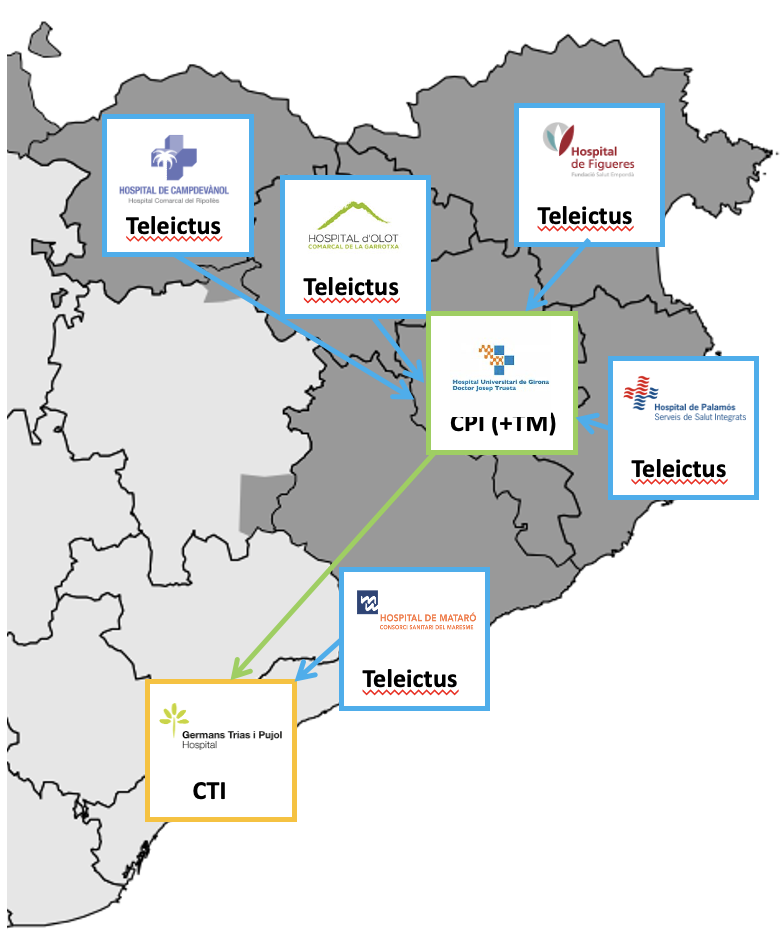
Μια κοινότητα ενοποιημένη με έναν μόνο στόχο είναι ζωτικής σημασίας για την επιτυχία ενός δίκτυο αγγειακού εγκεφαλικού επεισοδίου, πιστεύει. Η χαρτογράφηση της περιοχής σας και της κατανομής του πληθυσμού είναι το κλειδί για τη δημιουργία ενός λειτουργικού δίκτυο αγγειακού εγκεφαλικού επεισοδίου επεισοδίων, αλλά η δημιουργία σχέσεων μεταξύ νοσοκομείων και η καλλιέργεια σχέσεων μεταξύ επαγγελματιών είναι αυτό που τελικά ωφελεί τους ασθενείς. Η κοινή χρήση ενός κοινού μητρώου αγγειακό εγκεφαλικό επεισόδιο επεισοδίων από το οποίο τα δεδομένα μπορούν να απεικονιστούν και να χρησιμοποιηθούν για κλινική έρευνα και η συνεργασία σε κλινικές δοκιμές που βασίζονται σε εδαφικές περιοχές, όπως το REVASCAT ή το RACECAT, ενισχύουν επίσης τα κίνητρα και τη συμμετοχή.
Η θητεία του Δρ. Pérez de la Ossa ως διευθυντή του σχεδίου αγγειακό εγκεφαλικό επεισόδιο επεισοδίων της Καταλονίας θα δώσει προτεραιότητα στην οργάνωση και την τυποποίηση, τη συνεχή αξιολόγηση για τη βελτίωση της ποιότητας και τις βελτιώσεις στη διαχείριση της φροντίδα αγγειακού εγκεφαλικού επεισοδίου.
Η διεπιστημονική παρέμβαση στη φροντίδα αγγειακού εγκεφαλικού επεισοδίου μια εξέλιξη που ελπίζει να παρατηρήσει στη θεραπευτική αντιμετώπιση του αγγειακό εγκεφαλικό επεισόδιο σε όλο τον κόσμο. Ευθυγραμμίζεται επίσης με την αποστολή της Πρωτοβουλία Angels να διασφαλίσει την πρόσβαση σε βελτιστοποιημένη θεραπευτική αντιμετώπιση για όλους τους ασθενείς με αγγειακό εγκεφαλικό επεισόδιο, ανεξάρτητα από το πού βρίσκονται. «Ειδικά όσον αφορά τη διαθεσιμότητα θεραπειών στην οξεία φάση, οι οποίες είναι πιο πιθανό να αλλάξουν την πορεία της νόσου, χρειαζόμαστε μεγαλύτερη ισότητα σε όλο τον κόσμο.»

